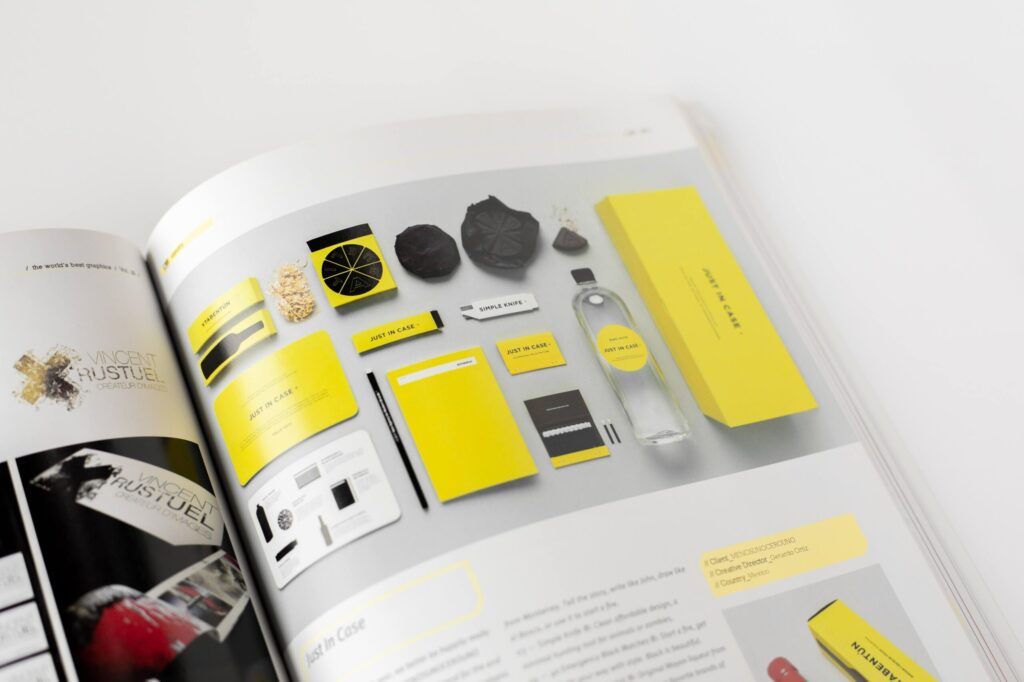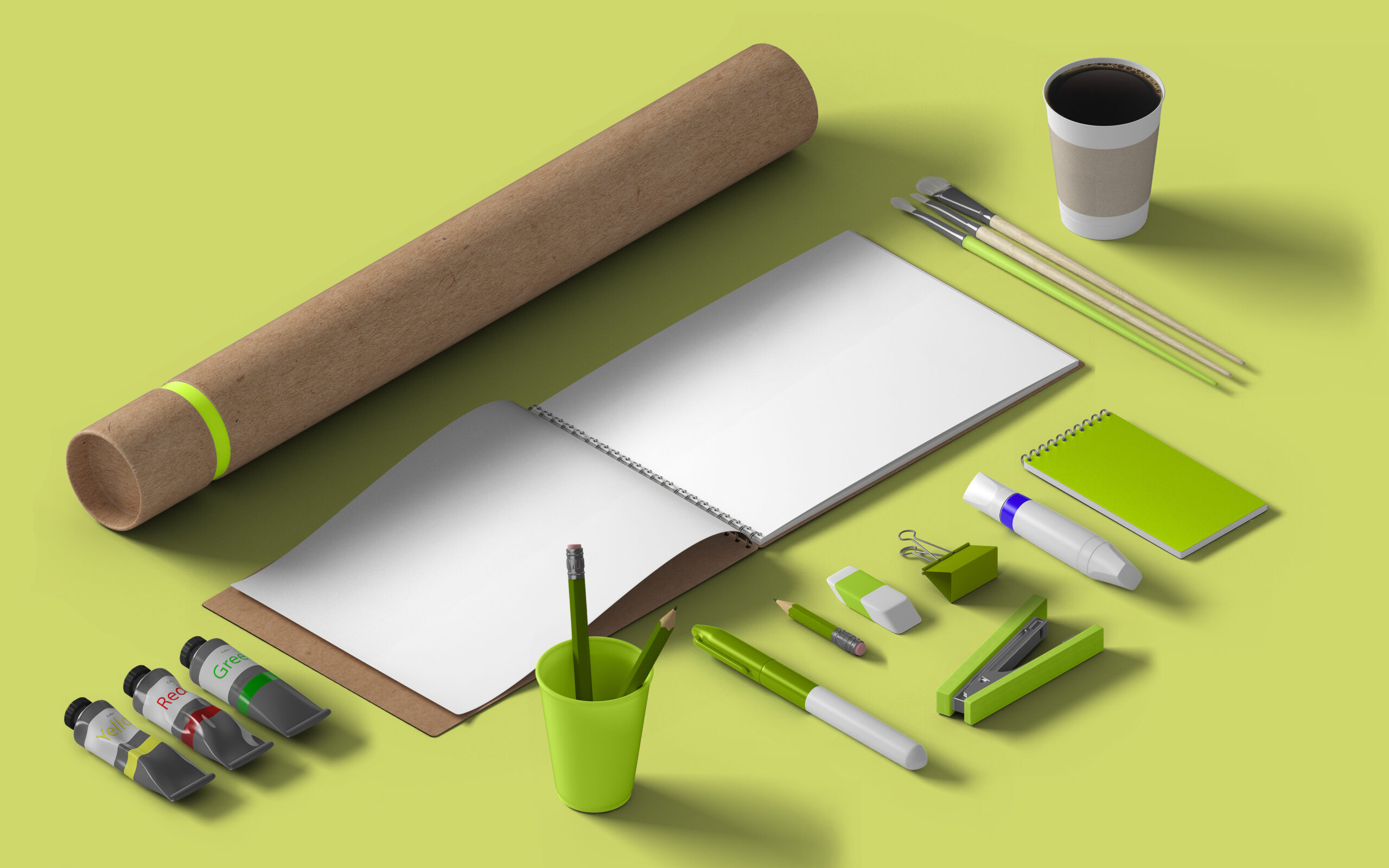How to Build your Brand Kit from Scratch

Contents
So, you’ve decided to take the leap and start your own business – congratulations!
But, wait a minute… have you thought about your brand yet?
Your brand is more than just a logo or a catchy tagline – it’s what sets you apart from your competition and helps you connect with your audience on a deeper level.
But, fear not!
Building a brand kit from scratch may seem like a daunting task, but with a little bit of guidance and a lot of creativity, you’ll be well on your way to creating a brand that truly reflects who you are and what you stand for.
In this post, we’ll take you through the steps you need to follow to create a killer brand kit that will make your business stand out in a sea of competitors.
What is a Brand Kit?
Think of your brand kit as your business’s wardrobe – it’s the collection of clothes (or in this case, visual elements) that make up your brand’s style.
Just like how you wouldn’t wear a ball gown to a basketball game (well, unless you’re a really big fan!), you want to make sure your brand’s visual elements are cohesive and appropriate for the occasion.
Your brand kit includes things like your logo, color palette, typography, and imagery. These elements work together to create a cohesive visual identity for your brand, which helps your audience recognize and remember you.
It’s like having your own signature look – but for your business.
Why is having a brand kit important for your business?
Having a brand kit is like having a secret weapon for your business. It’s like having your own superhero cape – it gives you that extra boost of confidence and helps you stand out from the crowd.
Think about it – when you see the McDonald’s golden arches, you immediately know what it represents, right?

That’s the power of a strong brand kit. It helps your audience recognize and remember your business, even in a sea of competitors.
Plus, it shows that you’ve put some thought and effort into your business’s visual identity, which can make you look more professional and trustworthy.
So, whether you’re just starting out or you’ve been in business for a while, having a strong brand kit is a must-have tool in your business arsenal.
It can help you attract more customers, build brand loyalty, and ultimately, grow your business.
Now that we’ve convinced you that having a brand kit is crucial for your business’ success, let’s talk about how to actually create one.
Don’t worry, it’s not as complicated as you might think!
Here are the basic steps to follow:
- Define your brand identity – figure out who you are, who your audience is, and what sets you apart from your competitors.
- Choose your brand visuals – this includes things like your color palette, typography, imagery, and of course, your logo.
- Create brand guidelines – establish rules for using your brand visuals and messaging consistently across all platforms.
- Implement and integrate your brand kit – start using your brand visuals on your website, social media, marketing materials, and anywhere else your business has a presence.
- Maintain your brand kit – periodically review and update your brand guidelines to make sure they’re still aligned with your business goals and values.
How to Develop a Brand Kit?

Alright, time to get to the fun stuff – defining your brand identity! This is where you get to really show off what makes your business unique.
First things first, you need to figure out who you are as a business. Are you fun and playful, or serious and professional? Are you focused on providing top-notch customer service, or offering the most innovative products on the market?
Next, think about who your audience is. Are they young and hip, or more mature and sophisticated? What are their needs and desires, and how can your business fulfill them?
Last but not least, figure out what sets you apart from your competition. What makes you different, and why should your audience choose you over someone else?
Once you have a clear understanding of your brand’s identity, you can start to create visuals that truly represent who you are and what you stand for. Think of it like picking out an outfit that perfectly matches your personality – it’s all about finding the right pieces that make you feel confident and true to yourself.
Choose your Brand Visuals for your Brand Kit

A. Choosing the right color palette is key to creating a cohesive visual identity for your brand. Colors can evoke certain emotions and feelings, so you want to make sure the colors you choose align with your brand’s personality and message.
For example, if you want to convey a sense of trustworthiness and reliability, blues and greens might be a good choice.

If you want to appear energetic and playful, yellows and oranges might be more your style.

But don’t just pick colors willy-nilly – think about how they work together as a whole. You want to create a palette that’s balanced and visually appealing.
Consider using Logo Maker Shop‘s Color Palette Tool to help you choose complementary colors that work well together.
Once you have your color palette nailed down, you can start incorporating it into your other brand visuals. It’s like choosing the perfect accessories to complete your outfit – it’s all about the little details that make a big impact!
Now that we’ve covered color, let’s move on to the other important aspects of your brand visuals.
B. Choosing the perfect typography – fonts can also convey a certain mood or vibe, so it’s important to choose the right ones for your brand.

Are you going for a classic and timeless look, or something more modern and edgy?
Make sure to choose fonts that are easy to read and consistent across all platforms.
C. Picking the right imagery – visuals are a powerful way to tell your brand’s story, so choose images that align with your brand’s message and identity.
Are you a travel company? Use images of exotic locations and adventurous activities.
A health and wellness brand? Use images of happy, healthy people. Just make sure to use high-quality images that are on-brand.
D. Designing your logo – your logo is the face of your brand, so you want to make sure it’s memorable and instantly recognizable.






Whether you’re designing it yourself or hiring a professional, make sure it reflects your brand’s personality and stands out from the competition. And don’t forget to use your brand’s color palette and typography in your logo design!
Remember, your brand visuals are like your personal style – they should be unique, expressive, and true to who you are.
By choosing the right colors, fonts, images, and logo design, you can create a visual identity that truly represents your brand and sets you apart from the rest.
Alright, we’re almost there! Once you have all your brand visuals nailed down, it’s time to create some guidelines to make sure everything stays consistent and on-brand.
Create brand guidelines

A. Define your brand’s voice and tone – how do you want to come across to your audience? Are you friendly and approachable, or more formal and professional? Establishing your brand’s voice and tone will help you communicate consistently across all platforms.
B. Establish your brand messaging – what do you want your brand to be known for? What are your core values and mission statement? Make sure your messaging is clear and consistent across all channels.
C. Create rules for using your brand visuals – make sure everyone on your team knows how to use your brand visuals correctly. This includes guidelines for logo placement, color usage, and typography.

D. Develop guidelines for marketing and advertising – how will you use your brand kit in your marketing materials? Make sure to establish guidelines for social media posts, email marketing, and any other advertising channels you use.
E. Implement and integrate your brand kit – now it’s time to put your brand kit into action! Make sure all your marketing materials, website, and social media channels are updated with your new branding.
And don’t forget to spread the word to your audience – let them know about your fresh new look!
Creating a brand kit can seem overwhelming, but by following these steps, you can create a visual identity that truly represents your brand and sets you apart from the rest.
So go ahead and strut your stuff with your new brand kit – you’re ready to take on the world!
How to Use Your Brand Kit?
Once you’ve created your brand kit, it’s time to start using it! Here are some ways to apply your brand kit to different aspects of your business:
A. Creating branded collateral – this includes things like business cards, flyers, and brochures. Make sure to use your brand’s colors, fonts, and imagery to create a consistent look across all your collateral.
B. Applying your brand kit to your website – your website is often the first place people go to learn about your brand, so make sure it’s on-brand! Use your brand’s colors, fonts, and imagery throughout your website to create a cohesive look.

C. Using your brand kit on social media – social media is a powerful tool for building your brand, so make sure your profiles are consistent with your brand kit. Use your brand’s colors, fonts, and imagery in your profile pictures, cover photos, and posts.
D. Incorporating your brand kit in advertising campaigns – whether you’re running ads online or in print, make sure to use your brand kit to create a cohesive look. Use your brand’s colors, fonts, and imagery in your ads to make sure they’re instantly recognizable as part of your brand.
By using your brand kit consistently across all aspects of your business, you’ll create a strong, cohesive brand that your customers will recognize and remember.
So go ahead and have fun applying your brand kit – your business will thank you for it!
How to Maintain Your Brand Kit?
Now that you’ve put in all the hard work of creating and using your brand kit, it’s important to make sure it stays up-to-date and consistent over time.
Here are a few tips to help you maintain your brand kit:

A. Revisit and revise your brand kit as needed – as your business evolves, so should your brand as too. Make sure to revisit your brand kit every so often to make sure it’s still in line with your goals and values.
B. Monitor consistency across all channels – consistency is key when it comes to building a strong brand. Keep an eye on how your brand kit is being used across all channels – from your website to social media to print materials – to ensure that it’s always being used in a consistent and cohesive way.
C. Continuously improve your brand kit – building a brand is an ongoing process, so don’t be afraid to experiment and make changes to your brand kit as needed. This might mean updating your color palette, refreshing your imagery, or even rethinking your brand messaging.

By following these tips, you’ll be able to keep your brand kit fresh and relevant over time. So keep on maintaining that kit and watch your brand continue to grow and evolve!
Wrapping it Up
And there you have it – everything you need to know about building your own brand kit from scratch!
Let’s quickly recap why having a brand kit is so important:
A. It helps create a consistent and recognizable look for your brand
B. It establishes your brand’s identity and sets you apart from the competition
C. It makes it easier to create marketing materials and maintain a cohesive brand image
Now, before we say goodbye, let’s review the steps to follow when creating your own brand kit:
- Define your brand identity
- Choose your brand visuals
- Create brand guidelines
- Implement and integrate your brand kit
And that’s it! By following these steps, you’ll be well on your way to creating a brand that stands out and resonates with your audience.
So, what are you waiting for? Get started on building your own brand kit today and watch your business grow!

As our Chief SEO & Branding Strategist, Robert Ellison is a digital marketing visionary with over 25 years of experience transforming brands through smart, data-driven SEO and impactful storytelling. Known for his expertise in aligning technical SEO with authentic brand narratives, he leads our team in creating strategies that boost search rankings while building strong, sustainable brand identities. A trusted advisor and frequent industry speaker, Robert combines deep technical knowledge with creative insight, helping our clients not only reach the top of search results but also genuinely connect with their audiences.








